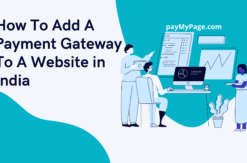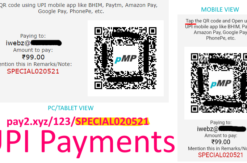Adding Online Payments To WordPress
To add online payments to WordPress you must first identify how you wish to present your products and collect payments. You can present your products in a standard e-commerce format with a shopping cart and checkout payment options. Another way is to present your products in a page or post and use links to collect payments via payment pages.
WordPress and WooCommerce
As we mentioned earlier, one method to add online payments to WordPress is to use to convert your website to an online store by adding the WooCommerce plugin. WooCommerce adds an online store with a shopping cart to your WordPress website.
Using WooCommerce the purchase process will as follows:
Product Page > Add to Cart > Login > Checkout > Payment
If you choose to go this route you will need to research payment gateways that offer WordPress/WooCommerce extensions. Most modern payment gateways these days offer this support. Simply signup with the payment gateways and download their WordPress plugin or WooCommerce extension.
Once you have installed WooCommerce, install the payment gateway plugin/extension, and activate it with your payment gateway account credentials.
Pros:
- Online user account management on your WordPress website for your customers.
- Online order and inventory info management on your WordPress website for your customers.
- Easy installation and setup.
Cons:
- Payment gateway extensions may be paid extensions to purchase from the WooCommerce store.
- Multiple steps for customers to go through before paying.
- Requires your customer to login to make payments.
- Will not work with a non-WordPress website if you plan to switch in future.
WordPress and payMyPage / Payment links
Sometimes you may wish to present each product in a dedicated page or post with a purchase option at the end like a sales letter. In such cases you would want to offer a direct payment option for immediate purchases.
Payment links i.e. links to hosted payment pages is ideal for such a scenario. Many payment gateways already offer this option. Simply signup with such a payment gateway and create a payment link for each product. Then use these links in your page or post in the form of Buy Now link or button.
Payment links also give you the flexibility of using direct payment links in places other than your WordPress website such as emails, chats, social media posts, etc.
Using this method purchase process will be as short as:
Product Page > Payment
Pros:
- Payment links/pages are available as a free service.
- Allows for quick impulse purchase by your customers.
- Customers can go to the payment page without a login.
- Works with WordPress or non-WordPress websites allowing for switching websites in future.
- Easy to use just like normal web links.
Cons:
- Order and inventory information will need to be handled offline/manually.
- Customer account management will need to be handled offline/manually.
payMypage (pMP) offers power-packed payment pages where you can activate more than one payment gateway for your payment pages and get more flexibility in how you get paid.
For example to show the local payment gateway payment options for your local buyers and PayPal payment options for your International buyers:
- Activate a local payment gateway module (where supported)
- Activate the PayPal module (where supported)
- Create a payment page for each product.
- Set local currency price and USD price for each product.
- Add the payment page links in your WordPress product page/post content in the form of Buy Now links or buttons.
With pMP you can add more info to your payment pages and also customise the look. You can also pass a custom value or identifier through the payment page link. more info


